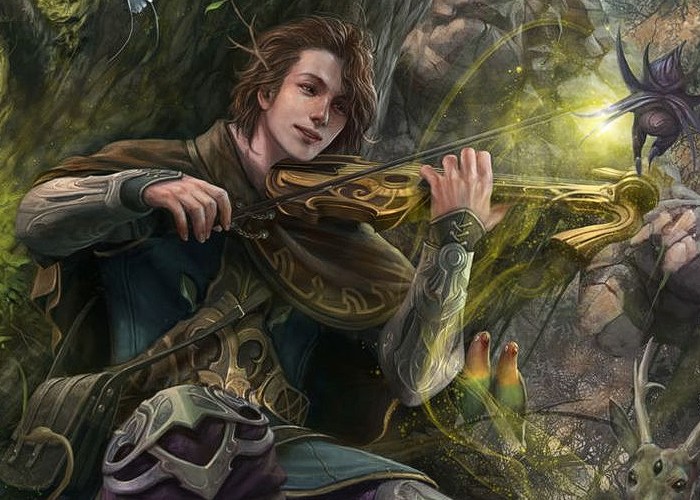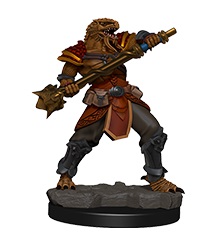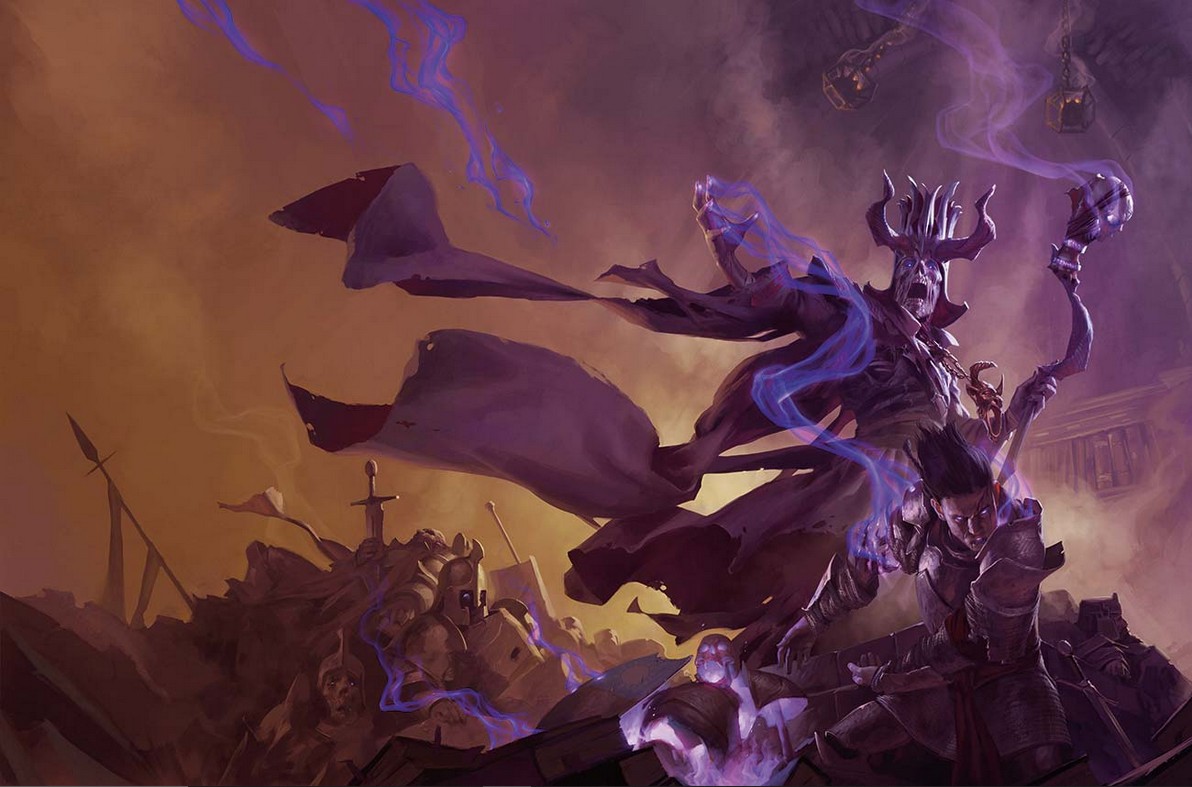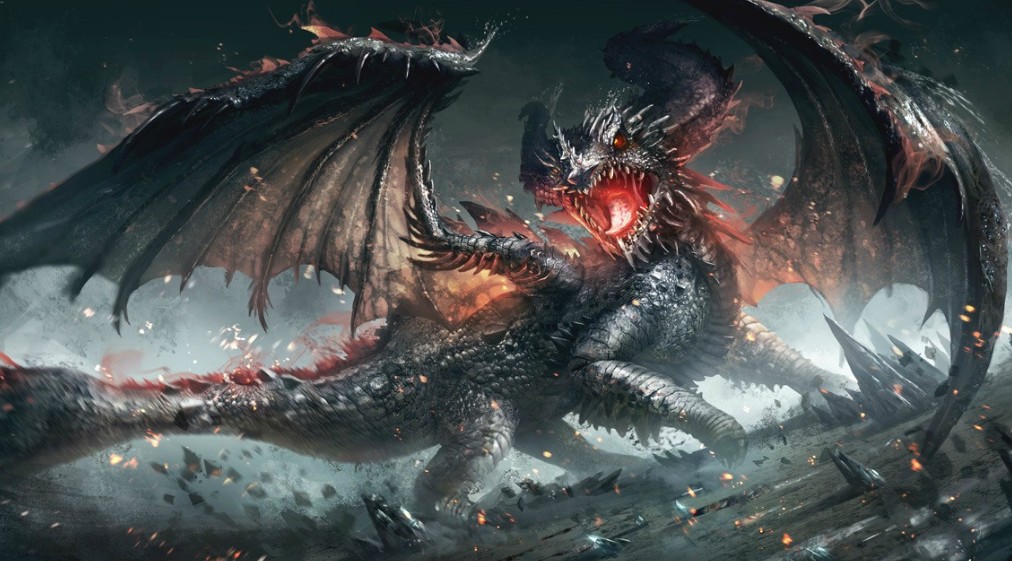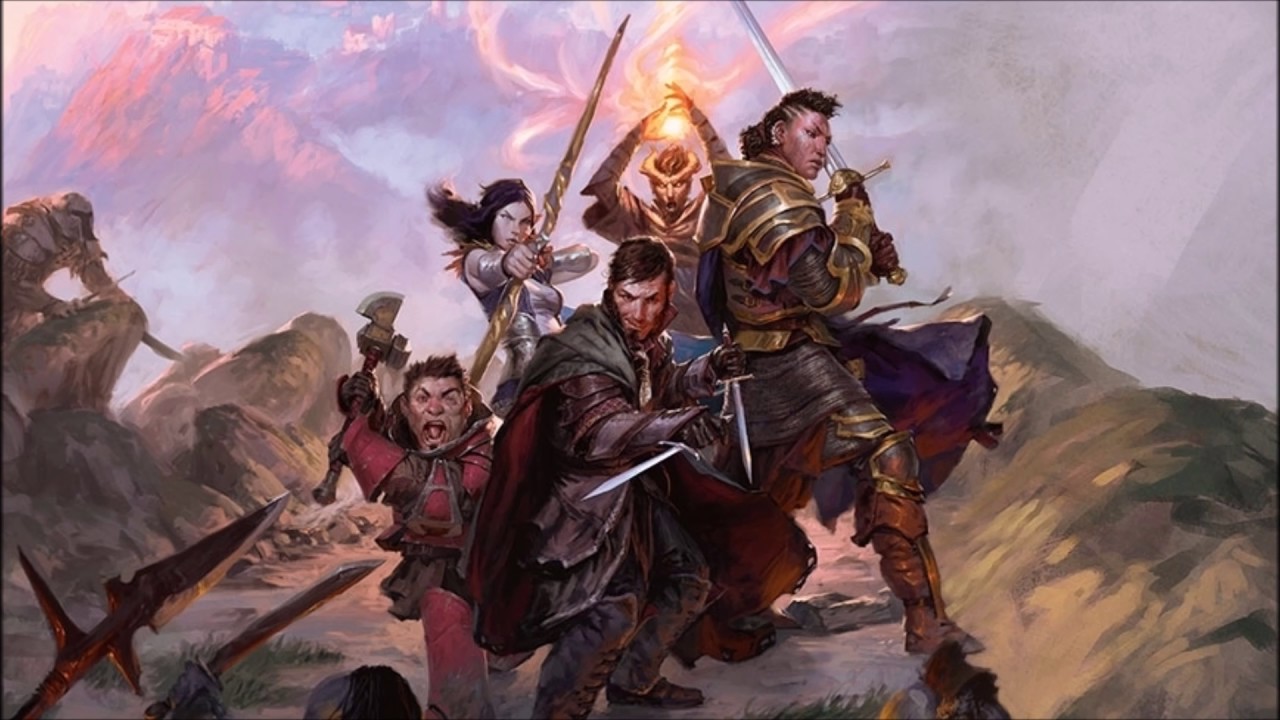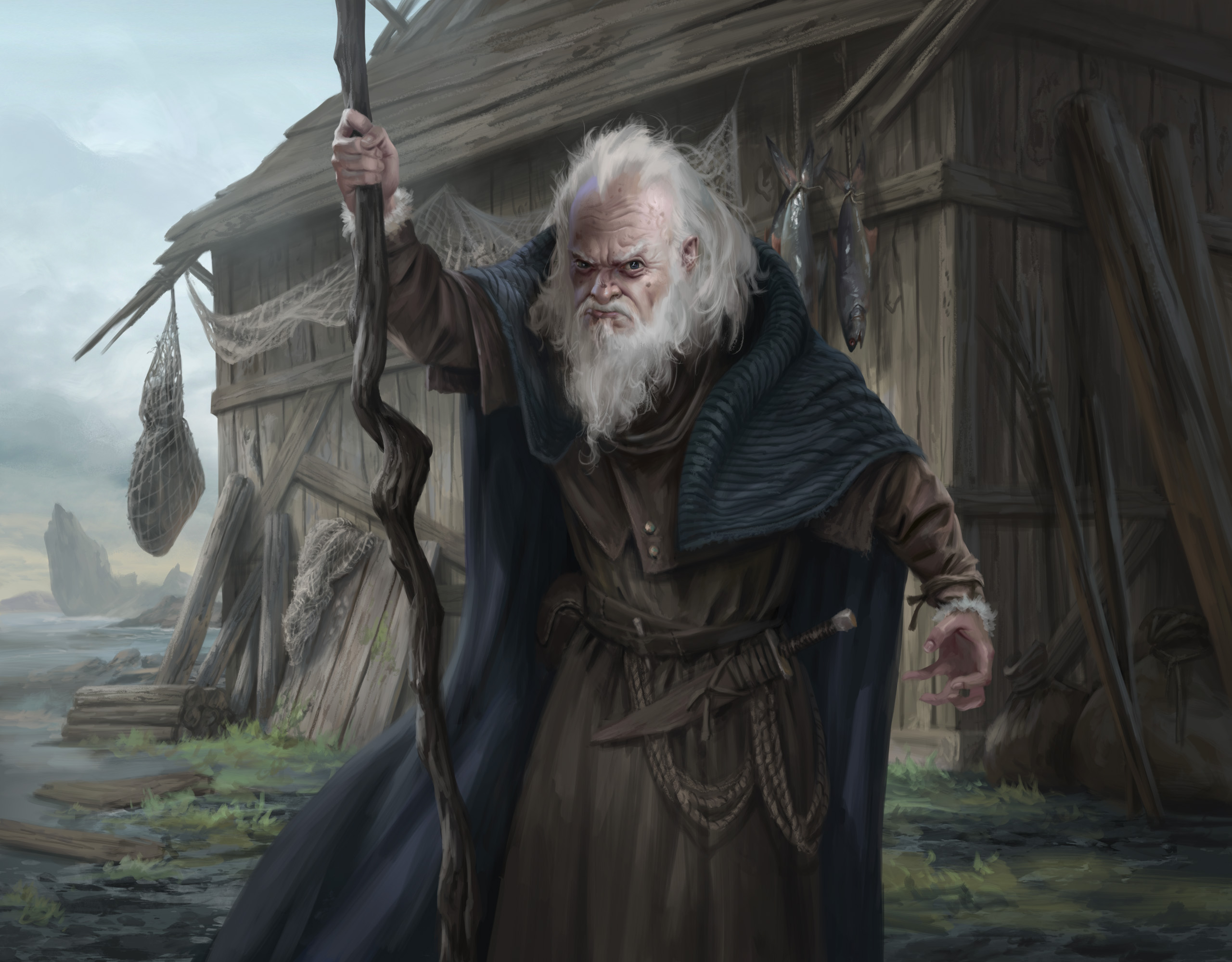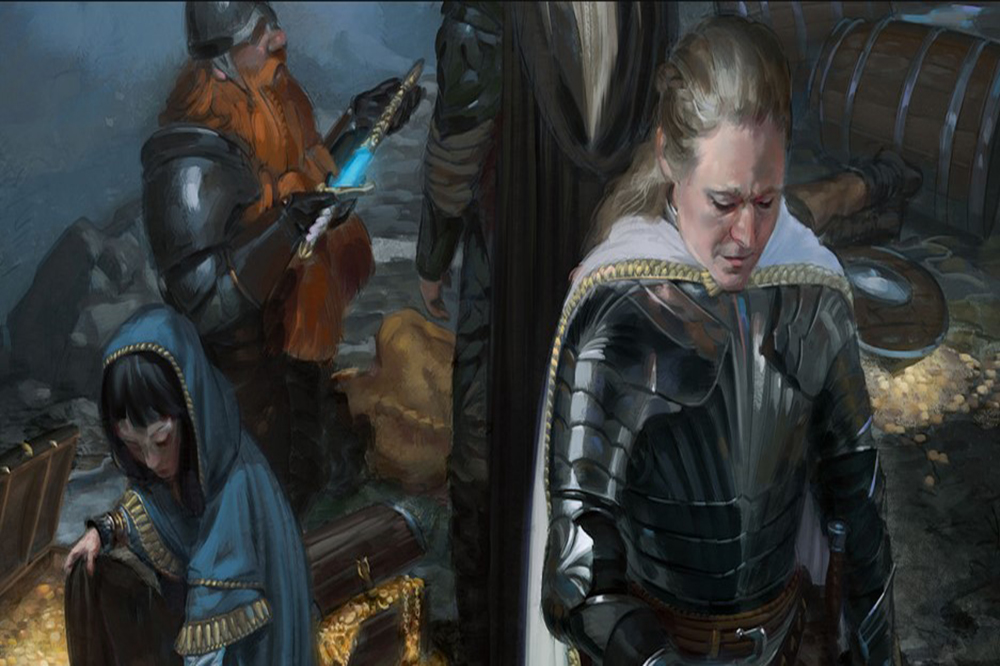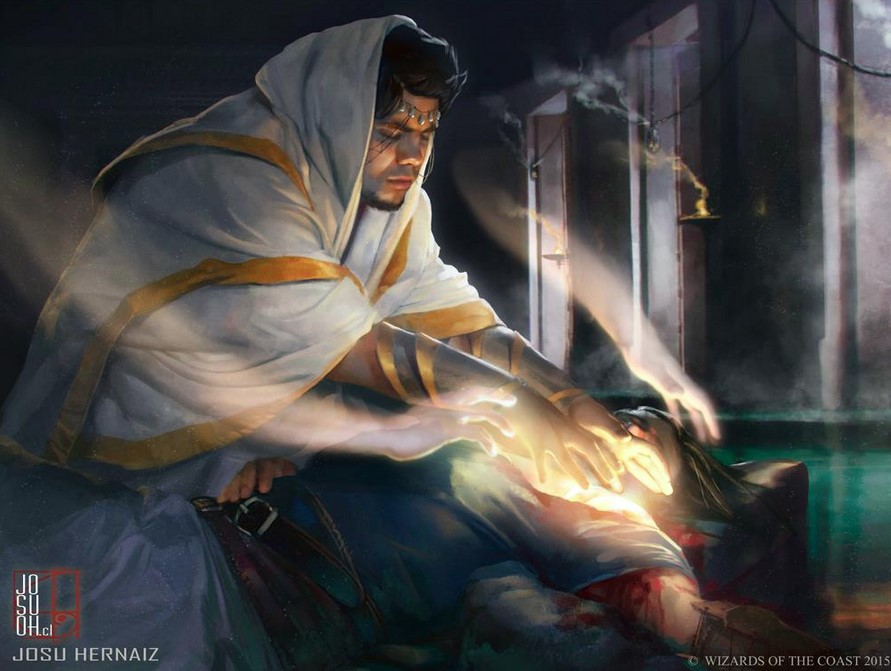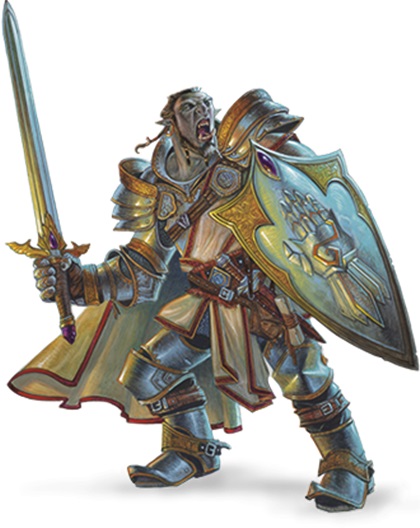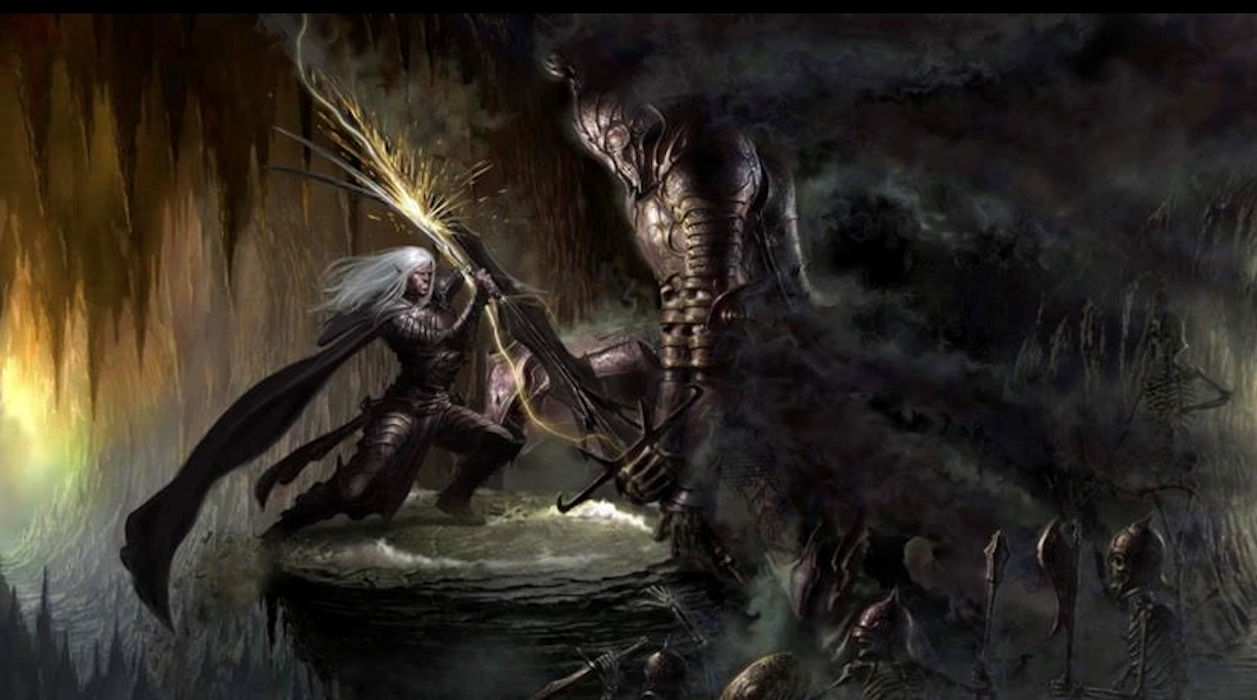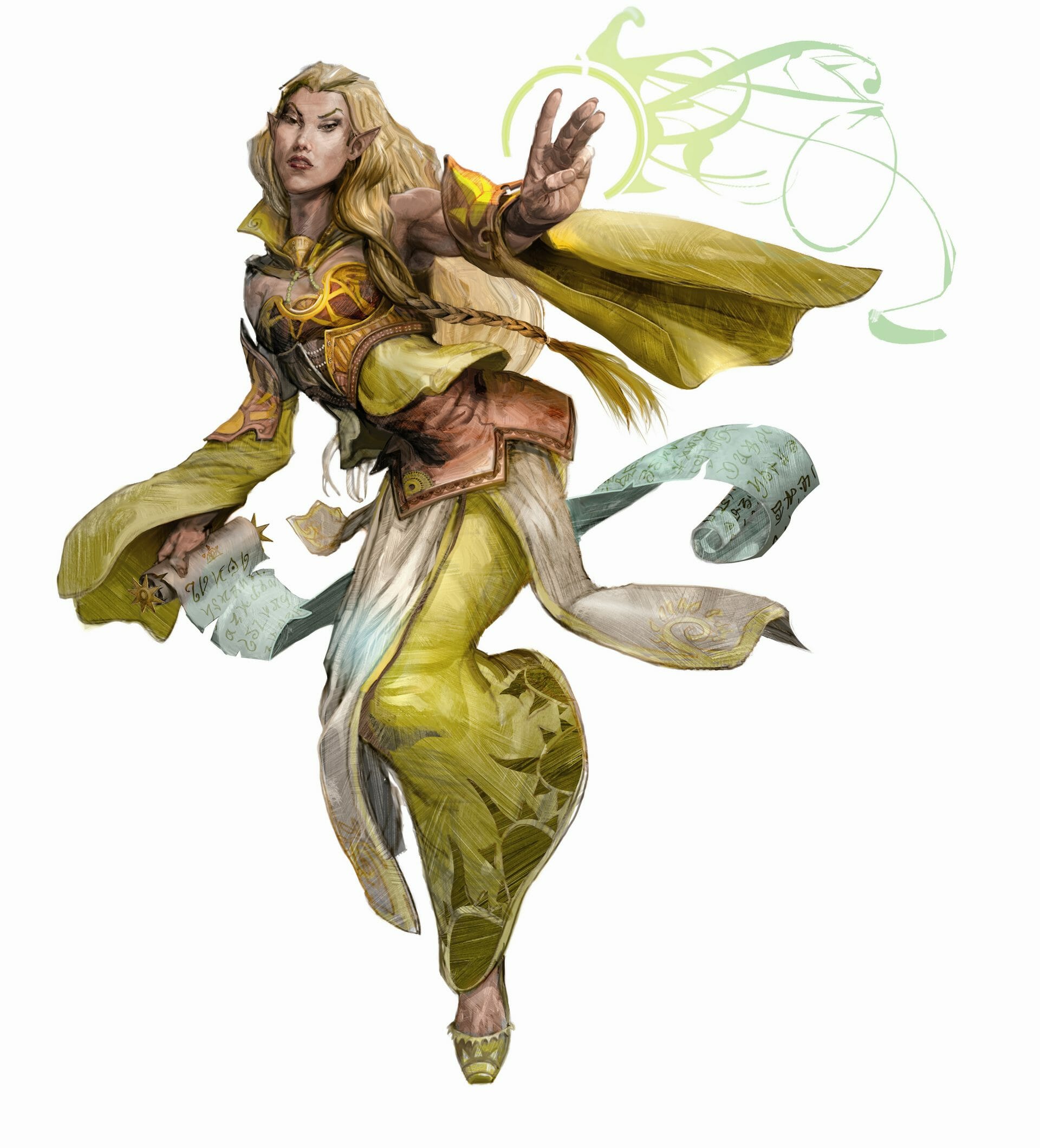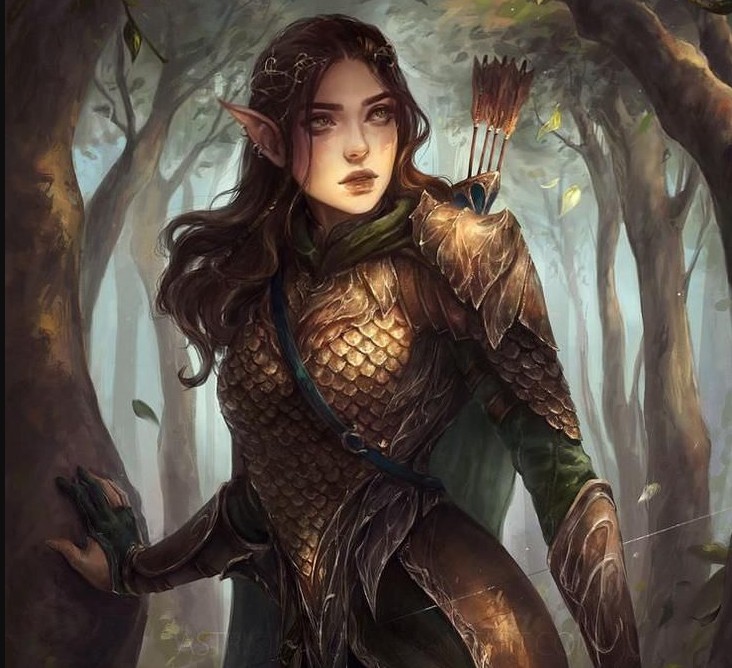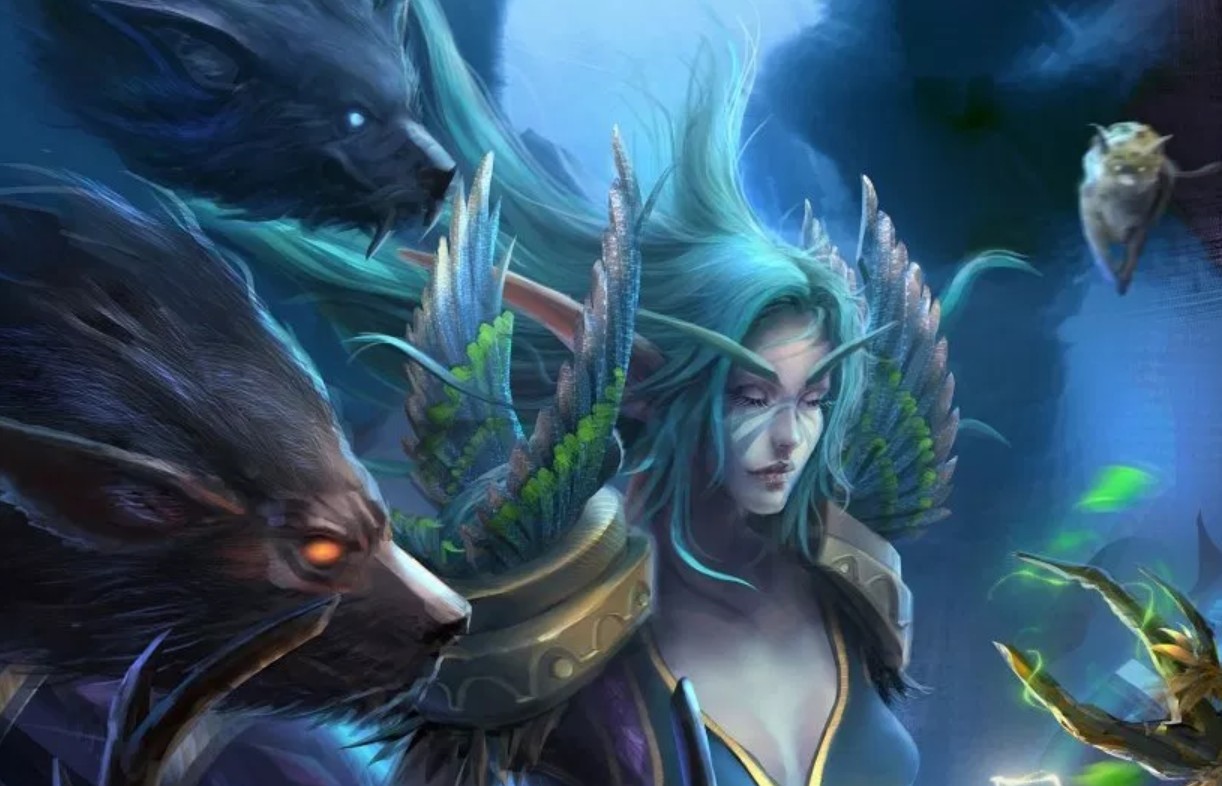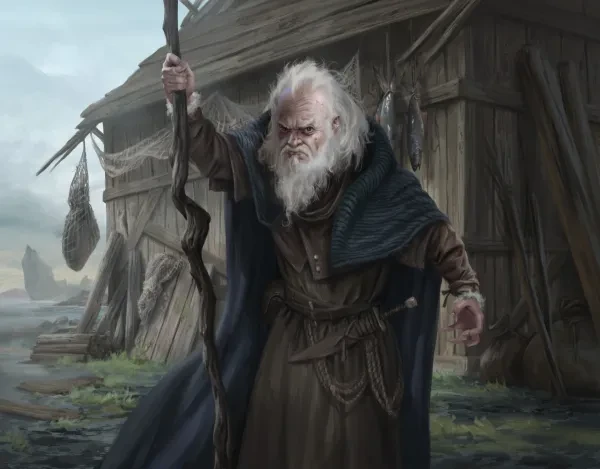
13. Graviturgy Wizard(Explorer's Guide to Wildemount)

Fell your enemies with the power of gravity!
Graviturgy is a wizard subclass introduced in the sourcebook, Explorer’s Guide to Wildemount, and gives wizards the power of gravity magic.
At 2nd level, your wizard gains the skill Adjust Density which as an action your wizard can magically alter the weight of one object or creature you can see within 30 feet of you.
At 6th level, your wizard receives the skill Gravity Well and when casting the spell on a creature can move it 5 feet to an unoccupied space but only if the creature is willing or if it fails a saving throw.
10th-level wizards get access to the skill Violent Attraction, which when a creature within 60 feet of you hits with a weapon attack, you can increase the velocity of the attack, causing the target of the attack to take an extra 1d10 damage.
Your wizard gains access to the skill Event Horizon at 14th level. As an action, your wizard can emit a powerful gravity field that pulls other creatures for up to 1 minute or until your wizard loses concentration.
While Graviturgy has some pretty interesting spells and abilities, the lack of no reduced price when copying a spell to your spellbook hinders the class.
Strengths:
- Event Horizon and Gravity Well allow for some battlefield control.
- Violent Attraction allows you to act as support for martial and ranged weapon classes and increase their damage.
Choose Graviturgy if:
- You want your wizard to wield the power of gravity against their opponents.
- You want to help control the battlefield with class skills.
- You want your wizard to act as support from time to time.
Graviturgy wiki link: http://dnd5e.wikidot.com/wizard:graviturgy
12. School of Transmutation(Player's Handbook)

Change your enemies with Transmutation Magic!
School of Transmutation is a subclass featured in the Player’s Handbook and lets players use Minor Alchemy at 2nd level to temporarily change the physical characteristics of a non magical object.
At 6th level, they get a Transmuter’s Stone which can give different buffs to wielders.
Starting at 10th level, your wizard gets access to the Shapechanger ability which lets you add the Polymorph spell to your wizard’s spellbook.
At 14th level, your wizard gains the skill Master Transmuter which allows them to use an action and use up the magic in their transmutation stone for the following effect: Major Transformation, Panacea, Restore to Life, or Restore Youth. The stone is destroyed afterward.
While there are some creative options that your wizard gains access to, the lack of combat-oriented skills holds it back.
Strengths:
- Change non magical objects with Minor Alchemy.
- Gain access to a Transmuter’s Stone that gains another skill at level 14.
- Your wizard gets a free copy of Polymorph at Level 10.
Choose School of Transmutation if:
- You want your wizard to be able to change non magical objects.
- Gain access to a Transmuter’s Stone that offers features for your wizard to take advantage of.
- Gain access to the Polymorph spell at level 10.
School of Transmutation wiki link: http://dnd5e.wikidot.com/wizard:transmutation
11. School of Conjuration(Player's Handbook)
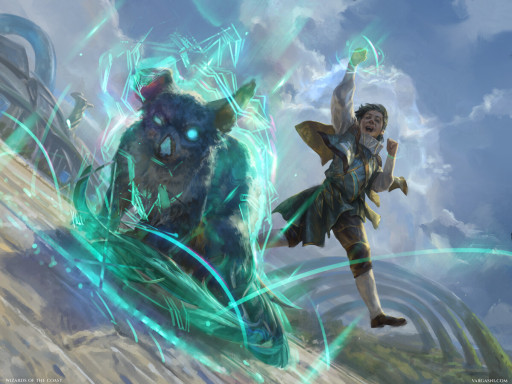
Conjure up an ally to help fight.
School of Conjuration is a subclass from the Player’s Handbook and deals with summoning objects and creatures out of thin air.
When your wizard reaches 2nd level they receive Conjuration Savant which halves the gold and time needed to copy Conjuration spells. They also receive Minor Conjuration at 2nd level, which allows them to conjure up an inanimate object.
Benign Transportation is a 6th-level ability for Conjuration wizards that allows them to teleport up to 30 feet to an unoccupied space that’s in visual distance.
At 10th level, your wizard receives the ability Focused Conjuration which stops them from having their concentration broken when having taken damage. It only works for Conjuration spells though.
When your wizard hits 14th level, they get access to the skill Durable Summons. Any creature that your wizard summons or creates receives 30 temporary hit points.
School of Conjuration might not be the most impressive class but it does allow help by either summoning or creating creatures to help fight alongside you. Unfortunately, due to it being not so impressive of a class, it also has some drawbacks too.
The first drawback is that you can only have one summoned creature at a time, with the other drawback being that there aren’t enough abilities in the subclass to help make your wizard a better conjurer. Focused Conjuration and Durable Summons are both nice but Minor Conjuration and Benign Transportation don’t add much in the Conjuration department.
Strengths:
- Summon a creature to help aid you in combat or an inanimate object to help in other situations.
- Your summons get 30 temporary hit points at level 14 which adds to their survivability.
- Can be fun for a player that likes to be creative and likes to summon objects and creatures.
Choose School of Conjuration if:
- You want your wizard to be able to summon objects or creatures.
- You want your wizard to have a summoned creature help them in a fight.
- Want to play a subclass that lets you add some creativity into the mix.
School of Conjuration wiki link: http://dnd5e.wikidot.com/wizard:conjuration
10. School of Necromancy(Player's Handbook)

Command the undead with the School of Necromancy!
School of Necromancy is a subclass found inside the Player’s Handbook and gives your wizard the power over undeath.
Starting at 2nd level your wizard gains access to the ability Necromancy Savant which halves the gold and time needed to copy a necromancy spell into your spellbook. Also at 2nd level, they gain access to the ability Grim Harvest which lets your wizard steal life from an enemy if they kill them with a 1st level spell or higher.
At Level 6, your wizard gains the ability Undead Thralls and gets the Animate Dead spell, which lets them get undead thralls to fight on their side.
Once your wizard reaches level 10, they gain the skill Inured to Death and gain both resistance to Necrotic damage and their Hit Point maximum can’t be reduced.
Your wizard gains the Command Undead ability at level 14 which lets them bring undead under their control, even ones that were created by other wizards.
School of Necromancy is a pretty situational subclass depending on the type of campaign you’re playing in, but if that campaign deals with a lot of undead, your wizard is going to be in for a fun time. The class has pretty good survivability too with Inured to Death and Grim Harvest.
Strengths:
- Grim Harvest and Inured to Death make for some pretty good survivability and resistance to Necrotic damage is good. Your wizard’s hit point maximum not being able to be lowered is also a bonus.
- You get to bring back the dead to fight for you at level 6 and at level 14, get to take them from other wizards.
Choose School of Necromancy if:
- You’re looking for a wizard subclass that has access to some decent survivability.
- You want your wizard to have an undead army by level 14.
- Your wizard prefers the dead to the living because they’re an introvert and don’t have to make conversation with the undead.
School of Necromancy wiki link: http://dnd5e.wikidot.com/wizard:necromancy
9. School of Evocation(Player's Handbook)

I didn’t ask how big the room was, I said I cast fireball!
At 2nd level, your wizard gains Evocation Savant and Sculpt Spells. Like with the other savant skills, it halves the gold and time needed to copy the school’s magic type. Sculpt Spells allow you to designate other creatures to succeed on their saving throws if the spell you cast would also affect them. The amount of creatures you can pick is 1+ the spell’s level.
Potent Cantrip is gained at 6th level and makes it so that even if a creature succeeds on a saving throw against the cantrip you cast, it takes half the damage it would normally have taken, instead of taking no damage.
Empowered Evocation at level 10 lets you add your wizard’s Intelligence modifier to one damage roll of any wizard evocation roll your wizard casts.
Finally, at 14th level, your wizard gains the Overchannel ability which when your wizard casts a spell of 1st-5th level, lets you deal the maximum damage of that spell. Doing it more than once before a long rest can have some adverse effects though.
Evocation wizards are wizards who focus on dealing powerful damage, with pretty straightforward damage spells. If you’re new to D&D or new to playing a wizard, the Evocation School is great because it’s a pretty straightforward subclass.
The main drawback with an Evocation wizard is that they don’t have many non-combat abilities so solving puzzles and some RP might be limited. Otherwise, it’s a pretty decent subclass.
Strengths:
- Cast powerful Evocation spells that deal decent to high damage.
- Good for newer players or players that haven’t played a wizard before.
- Can sculpt spells making it easier to cast AoE spells in combat, especially in smaller rooms.
Choose School of Evocation if:
- You’re newer to D&D/playing a wizard.
- You want to cast powerful spells that deal good damage.
- You don’t care how big the room is and want to cast Fireball!
School of Evocation wiki link: http://dnd5e.wikidot.com/wizard:evocation
8. School of Divination(Player's Handbook)
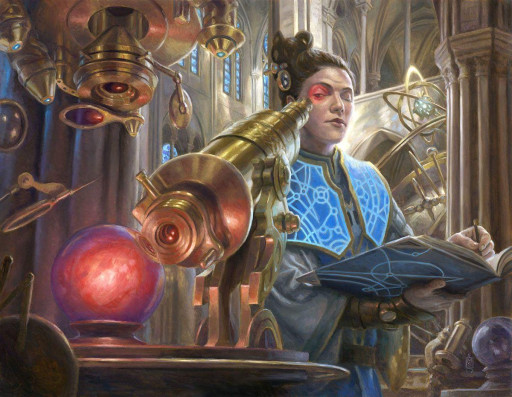
Plan ahead with Divination!
School of Divination is another subclass from the Player’s Handbook and includes Divination Savant at level 2 along with Portent at level 2 as well. Portent allows you to roll 2d20s after a long rest and uses those rolls as replacements for attacks, saving throws, or ability checks.
By level 6 your wizard gains the Expert Divination ability which when you cast a leveled divination spell, allows your wizard to gain back an expended spell slot. The slot has to be lower than the spell cast and can’t be above 5th level.
Your Divination wizards awaken The Third Eye at level 10 and let you choose from among 4 options which are Darkvision, Ethereal Sight, Greater Comprehension, and See invisibility.
Your wizard unlocks the Great Portent ability at level 14 which allows them to roll 3d20s instead of 2.
School of Divination might not be a combat-focused subclass but what it lacks in combat, it makes up for in RP potential and mechanical ability, especially with Potent and Greater Portent which lets you replace rolls for not just yourself, but any creature you can see.
If your Dungeon Master intends to run a campaign with a strong focus on combat, you might consider skipping School of Divination. However, if the campaign includes a blend of combat and role-playing or leans heavily towards role-playing, The School of Divination subclass will truly shine.
Strengths:
- Portent and Greater Portent straight-up lets you replace rolls for attacks, saving throws, and ability checks.
- It’s a heavy Role-Playing subclass so players that love RP will more than likely love this subclass.
- The Third Eye gives you Darkvision, See Invisibility, Ethereal Sight, and Greater Comprehension which are all incredibly useful.
Choose School of Divination if:
- You want the ability to replace rolls for yourself, other players, or even enemies.
- You like to RP and want to play a subclass that supports role-playing.
- You want to help the party both in and out of combat.
School of Divination wiki link: http://dnd5e.wikidot.com/wizard:divination
7. School of Enchantment(Player's Handbook)
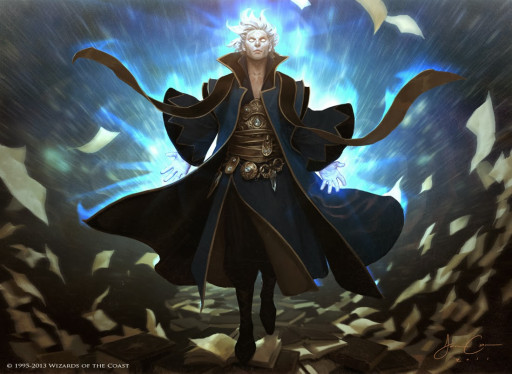
Charm the enemy to your side.
School of Enchantment is also from the Player’s Handbook and at 2nd level your wizard gets Enchantment Savant and Hypnotic Gaze which lets you enthrall another creature.
At 6th level, your wizard gains the ability Instinctive Charm which if they see a creature within 30 feet of them make an attack roll against them, they can divert the attack as long as there is another creature in the attack’s range.
Your wizard reaching 10th level gives them the Split Enchantment ability which allows them to target another creature with a 1st level or higher enchantment spell, provided the spell only targets one creature.
Finally, when your wizard reaches 14th level, they gain Alter Memories which makes it so that a creature is unaware of your magical influence on it.
School of Enchantment is a pretty good subclass both in and out of combat. By successfully charming creatures you can potentially avoid combat altogether, gain temporary allies, and even succeed in social encounters.
School of Enchantment offers access to very good buffs and debuffs like Bless for early-level buffs and Dissonant Whispers for a good early-level debuff towards enemies.
Strengths:
- Charm your enemies to help avoid combat or even draw them to your side.
- Buff your party members with spells like bless while debuffing your enemies with spells like Dissonant Whispers.
- Helps massively with social encounters.
Choose School of Enchantment if:
- You want to act as more of a support class during combat, helping with buffs and debuffs.
- You want to charm people to your side.
- You want the ability to avoid combat and succeed in social encounters.
School of Enchantment wiki link: http://dnd5e.wikidot.com/wizard:enchantment
6. Bladesinging(Sword Coast Adventuer's Guide/Tasha's Cauldron of Everything)
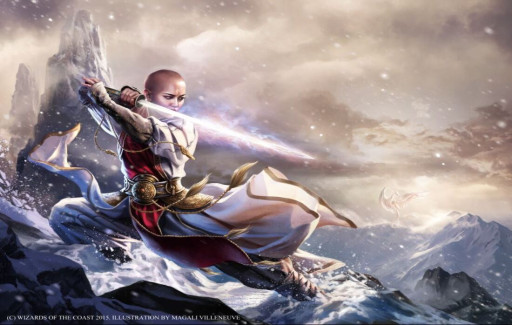
Slay your enemies with both the blade and magic.
Bladesinging is a wizard subclass from the Sword Coast Adventuer's Guide sourcebook that was updated in Tasha’s Cauldron of Everything and it pairs a wizard’s magic along with wielding a blade.
Training in War and Song is a feature your wizard gains at 2nd level which gives your wizard proficiency in light armor and also proficiency with a one-handed melee weapon of their choice, along with proficiency in the Performance skill.
Your wizard also gains the feature Bladesong at 2nd level, which allows your wizard to invoke elven magic called the bladesong which gives you supernatural speed, agility, and focus.
At 6th level, your wizard gains the ability extra attack which lets them attack a 2nd time during an action, they can forgo one of the attacks and cast a cantrip instead.
Song of Defense is acquired at 10th level and while your bladesong is active, you can have it absorb damage.
Song of Victory is gained at 14th level and it allows you to add your Intelligence modifier to the damage of your melee weapon attacks while Bladesong is active.
Bladesinging is a pretty fun subclass because it encourages versatility in both melee combat and magic. The bladesong adds buffs to your wizard’s AC, speed, and Constitution saving throws while trying to maintain concentration. Extra attack helps fell your enemies faster by being able to attack twice and Song of Defense helps toward your survivability.
The drawback for bladesinging though is that you’re a wizard wearing light armor that has to get up close and personal against their enemies if they want to make use of their melee weapon. Wizards have a D6 for their Hit Dice so your wizard is going to have a smaller health pool compared to melee classes like fighters and barbarians, and as a result,won’t be able to take as many hits compared to them.
Another disadvantage is that attempting to excel in both melee combat and magic can potentially diminish your effectiveness in both areas. Even with those two negatives, bladesinging is still a powerful subclass that lets your wizard get up close and personal if they need to.
Strengths:
- Lets you add versatility to your wizard by allowing them to be good with a melee weapon.
- You still have access to all your spells so if Bladesong gets disabled, you’re still an adept spellcaster.
- Extra attack lets you use a cantrip instead of making a second melee attack so you can attack and follow up with magic/vice versa.
Choose Bladesinging if:
- You want to play a subclass with versatility.
- You want to play a wizard that can wear more than cloth armor.
- You want to emulate a certain wizard that’s friends with two halflings.
Bladesinging wiki link: http://dnd5e.wikidot.com/wizard:bladesinging
5. School of Abjuration(Player's Handbook)
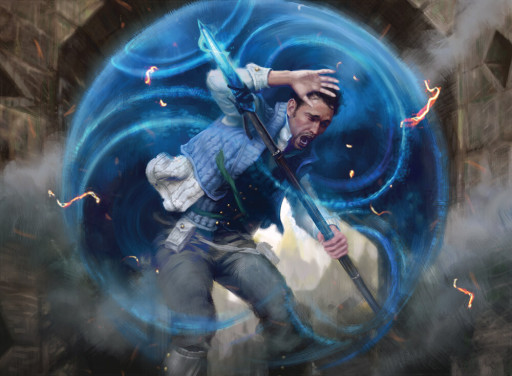
Protect yourself with counterspell!
School of Abjuration is a subclass for wizards found in the Player’s Handbook and at 2nd level, your wizard gains the Abjuration Savant feature. They also gain Arcane Ward at 2nd level which allows your wizard to protect themself with magic.
When your wizard reaches 6th level, they receive the ability, Projected Ward which allows them to absorb damage that another creature would take.
Once your wizard hits 10th level they get Improved Abjuration which allows them to add their proficiency bonus to ability checks needed by their Abjuration spells.
Finally, at 14th level, your wizard gains Spell Resistance which gives them advantage on saving throws against spells. They also gain resistance against the damage of spells as well.
If you want to protect yourself, and your allies, and have pretty good survivability, especially against other spellcasters, then School of Abjuration is the choice for you. Counterspell is one of the best abjuration spells out there because it allows you to nullify other spellcaster’s spells and Improved Abjuration makes it even easier to succeed on the check.
Abjuration is another good subclass for newer players to D&D/Wizards because it’s more of a reactive subclass so you can focus on doing damage on your turn while and can fall back and defend themselves or allies on their enemy's turn.
Strengths:
- Protect yourself with Arcane Ward and your allies with Projected Ward.
- Increase the chances of success on spells like counterspell with the Improved Abjuration feature.
- Gain resistance to the damage of spells and advantage on saving throws against spells at level 14.
Choose School of Abjuration if:
- You want to act as more of a support/protective class by protecting your allies.
- You want to play a subclass that’s more reactive than proactive.
- You want to play a subclass that grants more survivability with features like Arcane Ward.
- You’re newer to D&D/playing a Wizard and want to play a less complex subclass.
School of Abjuration wiki link: http://dnd5e.wikidot.com/wizard:abjuration
4. Order of Scribes(Tasha's Cauldron of Everything)
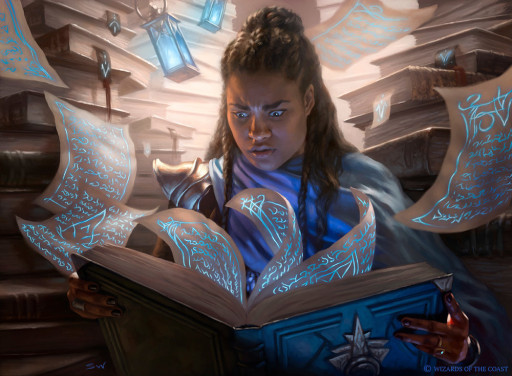
Study your way to victory!
Order of Scribes is from Tasha’s Cauldron of Everything and if your wizard wants to collect every spell, this subclass is for them.
At 2nd level, you receive both Wizardry Quill and Awakened Spellbook. Wizardry Quill allows you to create a tiny quill and cuts the time needed to copy spells into your spellbook. Awakened Spellbook allows your wizard to use their spellbook as a spellcasting focus and change the damage types of spells.
At 6th level, you get the skill Manifest Mind which lets you summon a familiar.
Master Scrivener is acquired at level 10 and increases your wizard’s ability to make spell scrolls.
At level 14, your wizard gains One with the Word which allows them to have advantage on all Intelligence checks and help protect themselves from other spells.
Order of Scribes is a subclass for players who want to play their wizard as a collector of knowledge and spells. The subclass lessens the time needed to copy spells into your spellbook and even lets you change the damage types of your spells.
Order of Scribes treats your spellbook as less of a tool and more of a pet and even lets you summon a familiar. Master Scrivener makes it easier to craft spell scrolls so you can give those to your party members for them to cast.
The biggest drawback with Order of Scribes is the lack of any savant feature so while copying a spell needs less time, it still requires the normal amount of gold to do so. Even with that drawback though, this is still an incredibly powerful subclass, especially for players that want their wizard to gain spells.
Strengths:
- Wizardry Quill lessens the time needed to copy spells into your spellbook.
- Order of Scribes is good both in and out of combat due to having access to more situational spells.
- Pairs well with feats like Spell Sniper which makes it able to stack spells and cast them in order.
Choose Order of Scribes if:
- You want the ability to shorten the time needed to copy spells into your spellbook.
- You want your wizard to be a collector of spells, giving them access to more answers both in and out of combat.
- You want to role-play your wizard as more bookwormish.
Order of Scribes wiki link: http://dnd5e.wikidot.com/wizard:order-of-scribes
3. War Magic(Xanathar's Guide to Everything)

Beware of wizards that study war.
War Magic is a subclass from Xanathar’s Guide to Everything that has mages both focus on the offensive and defensive nature of spells.
At 2nd level, your wizard gains Arcane Deflection which allows them to protect themselves with their magic. They also gain Tactical Wit at 2nd level which allows them to add a boost to their initiative equal to their Intelligence modifier.
Starting at 6th level your wizard gains Power Surge which lets them store magic within themselves to later add it to the damage of their spells.
At 10th level, you gain Durable Magic which gives you a +2 bonus to your AC when you maintain concentration on a spell.
When your wizard reaches 14th level they get Defensive Shroud which when you use Arcane Deflection allows you to channel your magic and deal damage to up to three creatures within 60 feet of you.
War Magic is a very powerful subclass that turns a good defense into a good defense. You get a boost to your initiative which is always good and a boost to your AC when maintaining concentration on a spell. On top of that, Power Surge grants you extra damage to your spells.
If you want to play a mix of both the Evocation and Abjuration subclasses, War Magic is the class for you.
Strengths:
- Very good at combat magic.
- Better survivability as a wizard.
- Able to go earlier with an increased initiative.
Choose War Magic if:
- You want to play a magic subclass that focuses on both offense and defense.
- You want your wizard to potentially go earlier in combat.
- You want to add extra power to your spells.
War Magic wiki link: http://dnd5e.wikidot.com/wizard:war-magic
2. School of Illusion(Player's Handbook)
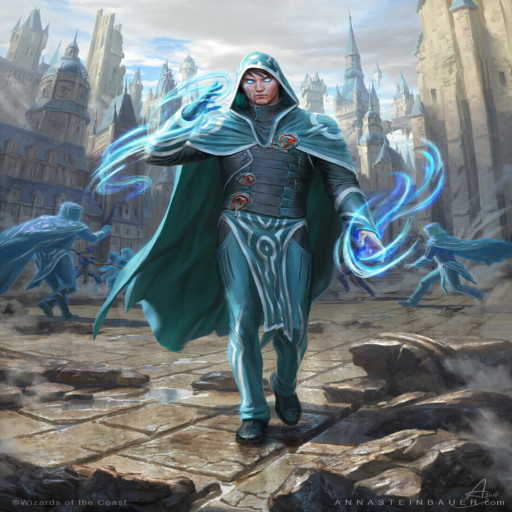
Confuse your enemies with illusions!
School of Illusion is from the Player’s Handbook and is a subclass all about illusion magic.
At 2nd level, you receive both Illusion Savant and Minor Illusion which lets you learn the Minor Illusion Cantrip.
At 6th level, your wizard gets Malleable Illusions which lets you change the nature of an illusion that lasts a minute or longer.
Starting at 10th level, your wizard gains Illusory Self which lets you create a copy of yourself.
Finally, at 14th level, your wizard gains Illusory Reality which lets you make your illusions real.
School of Illusion is a subclass that’s devoted to using illusion magic to trick your opponents by creating false sights and sounds. You can make illusions become real at level 14 and your illusory self can be used to make an attack miss you, which is incredibly powerful, especially if it is a critical hit.
Strengths:
- Create sights and sounds that fool your enemies.
- Good opportunity for role-playing with illusions.
- Make an attack automatically miss with Illusory Self.
Choose School of Illusion if:
- You want to play a subclass that’s more role-play-focused than combat-focused.
- You want to deceive NPCs with your illusions.
- You’re creative and want to add that creativity to your illusions.
School of Illusions wiki link: http://dnd5e.wikidot.com/wizard:illusion
1. Chronurgy Magic(Explorer's Guide to Wildemount)
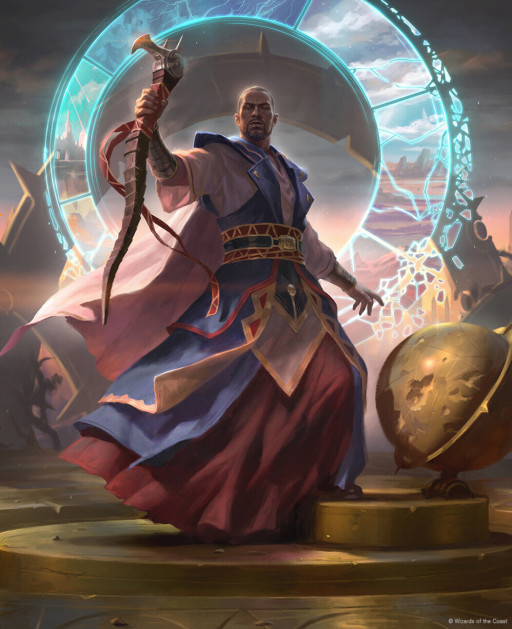
Do you have the time?
Chronurgy Magic is a subclass from Explorer’s Guide to Wildemount and is focused on the use of time magic.
At 2nd level, your wizard gains Chronal Shift which lets you control the flow of time, and Temporal Awareness which lets you add your Intelligence modifier to your initiative rolls.
At 6th level, your wizard receives Momentary Stasis which lets your wizard stop a creature via time.
At 10th level, your wizard gains Arcane Abeyance which allows your wizard to freeze a spell in time in a gray bead for 1 hour.
Once your wizard reaches 14th level they gain Convergent Future which allows them to mess with a creature’s attack rolls, saving throws, and ability checks.
If you want your wizard to be a master of time, the Chronurgy Magic subclass is for you. You’re able to freeze spells for later use and stop creatures with the use of time magic, go earlier in combat by adding your Intelligence modifier to your initiative rolls, and even determine the attack rolls of allies and enemies.
Chronurgy Magic is one of if not the best subclass in D&D currently for wizards because of how OP it is in combat. The only negative aspect of the subclass is that there aren’t many out-of-combat uses for it but that’s a small complaint compared to everything great about the class.
Strengths:
- Store a spell of 4th level or lower for later use for up to an hour.
- Stop enemies with Momentary Stasis.
- Add your Intelligence modifier to your initiative rolls.
- Lets your wizard determine the outcome of attack rolls, saving throws, and ability checks.
Choose Chronurgy Magic if:
- You want the power of time on your side in combat.
- You want to go earlier in combat.
- You want the ability to determine the outcome of some rolls.
Chronurgy Magic wiki link: http://dnd5e.wikidot.com/wizard:chronurgy

